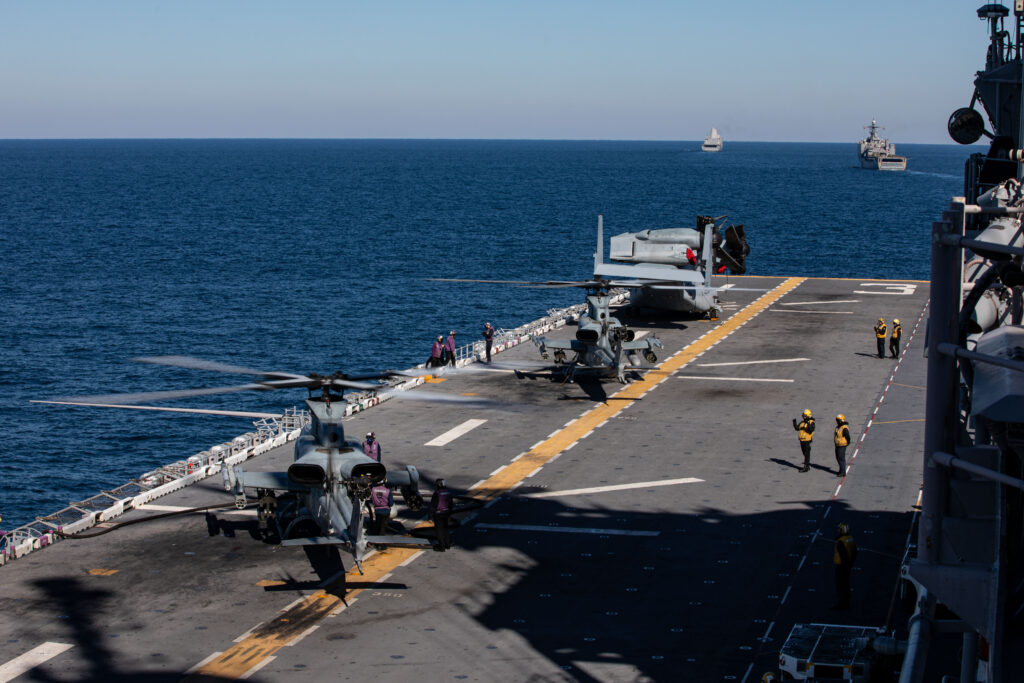
WASHINGTON — U.S. Marine Corps Commandant Gen. David Berger and Secretary of the Navy Secretary Carlos Del Toro are promoting air, surface and undersea unmanned vehicles, and some new uses for old platforms, as a way for the redesigned force to keep adversaries off balance.
Discussing the state of the Marine Corps at the Modern Day Marine exhibition May 10, the two leaders also explained the importance of Berger’s Force Design 2030 plan to prepare the Corps for future challenges from near-peer competitors like China and Russia, and other adversaries in a rapidly changing environment.
“Today’s Marines confront a threat environment characterized by rapid mobility, anti-access/aerial denial systems and cyberwarfare,” Del Toro said, adding that he has “strongly supported Gen. Berger’s Force Design 2030 since his very first day as Navy secretary.
Critics of the force redesign have faulted Berger for shrinking the size of the Corps, eliminating all of its battle tanks and much of its towed artillery, but the 38th commandant has said he is investing in equipment and tech-savvy Marines that will be more effective in a widely distributed, highly mobile and stealthy force using unmanned systems, sensors, and anti-ship and anti-aircraft missiles to dominate the littorals of the Indo-Pacific region and other maritime choke points.
However, he told the Modern Day Marine audience there are existing platforms like amphibious ships, which can be used in innovative ways, especially when paired with unmanned systems. “As more and more uncrewed technology comes to maturity and the cost of production goes down, I think new capabilities are within reach,” Berger said.
“Drone technology over the last 20 years has been transformational on the battlefield,” Del Toro said, “and exactly the kind of technology we need to embrace.”
Berger suggested an Amphibious Ready Group-Marine Expeditionary Unit could launch unmanned undersea vessels from an amphib well deck for antisubmarine warfare, counter reconnaissance, finding minefields and ISR. “No platform, no unit, is capable of a more diverse set of missions across the range of military operations than an ARG-MEU,” he said.
Initial experimentation with the long-range unmanned surface vessel, armed with loitering munitions “has demonstrated the potency of that kind of capability,” Berger said, adding the potential use of UUVs launched from an amphibious well deck is limited “only by your imagination.” On the other hand, a well deck “taxes the imagination of the adversary,” because it conceals what’s on it, Berger said. “If you can’t figure out what’s on the inside, you’re going to spend a whole lot of time trying to do that. It slows down their decision-making. That’s what we want.” Another way to keep an adversary off balance is with drone-delivered loitering munitions. “There’s a psychological impact. You don’t know whether it’s got a camera system or a warhead on it,” Berger said.
- Shall We Play a Game? Winning Isn’t the Point, Experts Say - April 5, 2023
- U.S. Goal: Maintaining Extended Presence in Arctic’s Harsh Environment - April 4, 2023
- Joint, Combined Exercise Shows Marine Littoral Regiment Idea is on ”Right Track’ - February 24, 2023



